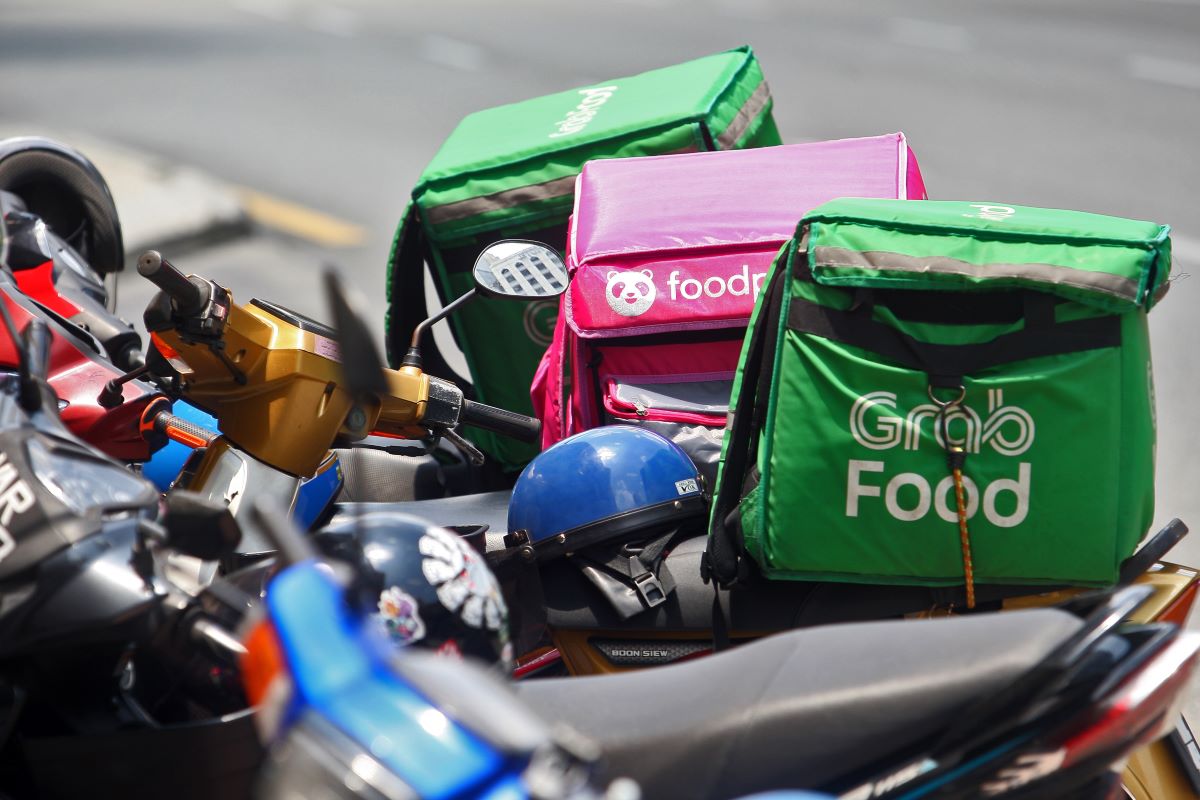Amid a thriving culinary landscape, Asia’s online food delivery companies present a tantalising investment opportunity. These companies have redefined the way people dine and order groceries. With several factors such as a burgeoning middle class, rapid urbanisation, and a digital-savvy population, the online food delivery market in Asia has witnessed an unprecedented surge in recent years.
Covid-19 also gave a massive boost to online food delivery companies as people were quarantined and restaurants were prohibited from catering to dine-in guests. The delivery of groceries also added much-needed convenience and safety during the pandemic.
The market for online food delivery in Asia is anticipated to generate $564.70 bn in revenue in 2023, as per Statista. Grocery delivery is the market’s largest category, with an estimated market size of $325.30 bn in 2023.
“Global food-delivery companies are expected to reach core EBITDA profitability in 2023…Asia is likely to fuel international expansion, with up to 18% average annual revenue growth through 2027, buoyed by China (20% CAGR), India (18% CAGR) and Japan (17% CAGR),” said Morgan Stanley.
Smartphones, internet penetration propelling Asia’s food delivery companies
Online food delivery companies in Asia are expanding rapidly as a result of purchasing food items using mobile apps.
To put this into perspective, China, which has the highest number of internet and smartphone users globally, is also expected to record the highest revenue from online food delivery companies in 2023. The Asian country is projected to rake in $395,900 mn from the sector this year.
Along these lines, a report by Frost & Sullivan cited the rapid penetration of the internet and smartphones as a major driver behind the growth in Southeast Asia’s on-demand food delivery market. The market research company defines on-demand food delivery service as a door-to-door and an online-to-offline service.
“…internet subscribers in Southeast Asia accounted for 53.4% of the total population, compared with 7.8% in 2015. Young people are the most important demographic filling this space,” the report said.
And it is not just Southeast Asia. All in all, the Asia-Pacific region is getting more and more connected to digital infrastructure. According to the GSMA, mobile internet users will rise to 2.7 billion in the region by 2025, up from 2 billion in 2021, with the penetration rate rising to 61%.
Furthermore, the region is experiencing an aggressive rollout of 5G telecom services. For example, in May 2023, Telkomsel debuted commercial 5G services in Indonesia. 5G services were also rolled out in India in October 2022, and it is projected that India will have 5G connectivity across the country by March 2024.
“Some of the main factors that have fuelled the market expansion in the region include…rising internet and smartphone usage… It is anticipated that the Asia-Pacific Food Platform-to-Consumer Delivery market will expand at a CAGR of 10.52% during the projection period (2023-2028)…The Covid-19 pandemic has expedited the online meal delivery industry’s expansion in Asia-Pacific,” said Mordor Intelligence.
How to invest in Asia’s food delivery companies?
Here is a list of Asian online food delivery companies that stand out from their peers.
Grab Holdings
Grab Holdings is a multinational technology company headquartered in Singapore. Through its subsidiary, GrabFood, the company provides food delivery services in countries like Singapore, Indonesia, Cambodia, Malaysia, Myanmar, Philippines, Thailand, and Vietnam.
The company’s revenues rose by 125% year on year to $1,433 mn in 2022. Full-year Adjusted EBITDA improved by 6% to negative $793 mn. Loss for the year improved by 51% to $1,740 mn.
Listed on US’s Nasdaq (NASDAQ: GRAB), the company has a market capitalisation of $14.38 bn. The company’s stock has risen by 48% in the past year. It has a negative PE ratio of 7.83 and a price-to-book ratio of 2.22.
“The outlook for growth (of Grab Holdings) this year looks promising, with the potential for a strong 2H recovery despite employee-related costs but cuts will establish a more competitive cost base long term,” writes Angus Mackintosh, of CrossASEAN Research who publishes on Smartkarma.
Meituan
Founded in 2010 and headquartered in China’s Beijing, this Chinese company is the world’s largest food deliverer.
Meituan registered a 22.8% year-on-year rise in revenue, amounting to 220 bn yuan ($30.81 bn) in 2022. During the same period, the company recorded a profit of 3.4 bn yuan ($476.2 mn), turning from loss into profit on a year-over-year basis.
Meituan has a market cap of $115.51 bn and is traded on the Stock Exchange of Hong Kong (HKG: 3690). The company’s shares have fallen by 24.16% since last year. It has a negative PE ratio of 52.28 and a price-to-book ratio of 5.77.
Besides Hong Kong, American Depository Receipts (ADR) are listed on NASDAQ (OTCMKTS: MPNGF) in the US and are accessible through over-the-counter transactions.
Zomato
Zomato is a Indian restaurant aggregator and meal delivery service. Along with food delivery, the company offers information and user reviews on Indian restaurants, and has partner restaurants in more than 1000 Indian towns and cities, as of 2022.
The company’s revenue was up by 69% year-on-year to Rs 1209 crore ($147.12 mn) in the financial year ended March 2023. During the same period, Zomato narrowed its losses from Rs 1207 crore ($146.88 mn) to Rs 917 crore ($111.59 mn).
Zomato stocks are listed on the Bombay Stock Exchange (BOM: 543320) and the National Stock Exchange of India (NSE: ZOMATO). The company has a market cap of $8.35 bn. Since last year, the company’s shares have gained 40.87%. Also, the company’s shares have a negative PE ratio of 56.08 and a price-to-book ratio of 3.62.
Editor’s note: All stock movement figures as of July 14, 2023.










 Australia
Australia China
China India
India Indonesia
Indonesia Japan
Japan Malaysia
Malaysia Philippines
Philippines Singapore
Singapore South Korea
South Korea Taiwan
Taiwan Thailand
Thailand Vietnam
Vietnam Germany
Germany Hong Kong
Hong Kong USA
USA Switzerland
Switzerland Singapore
Singapore
 United Kingdom
United Kingdom








